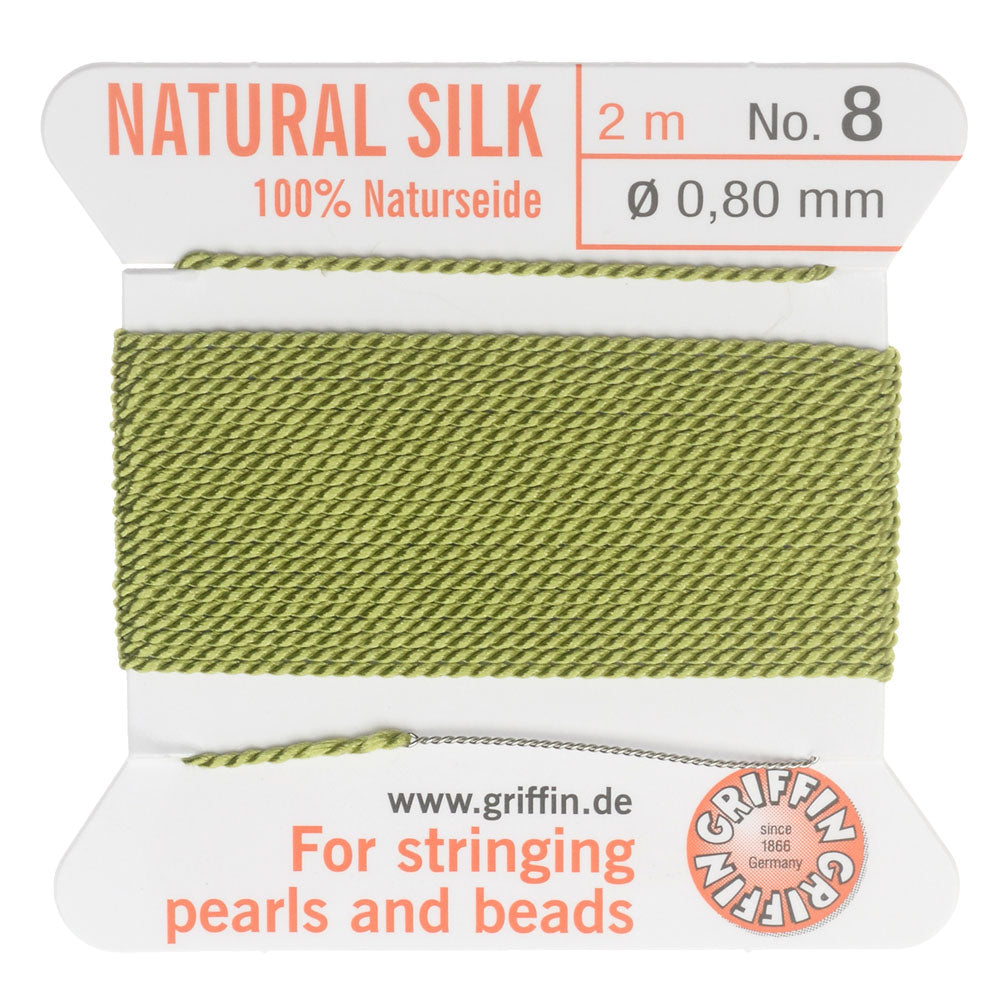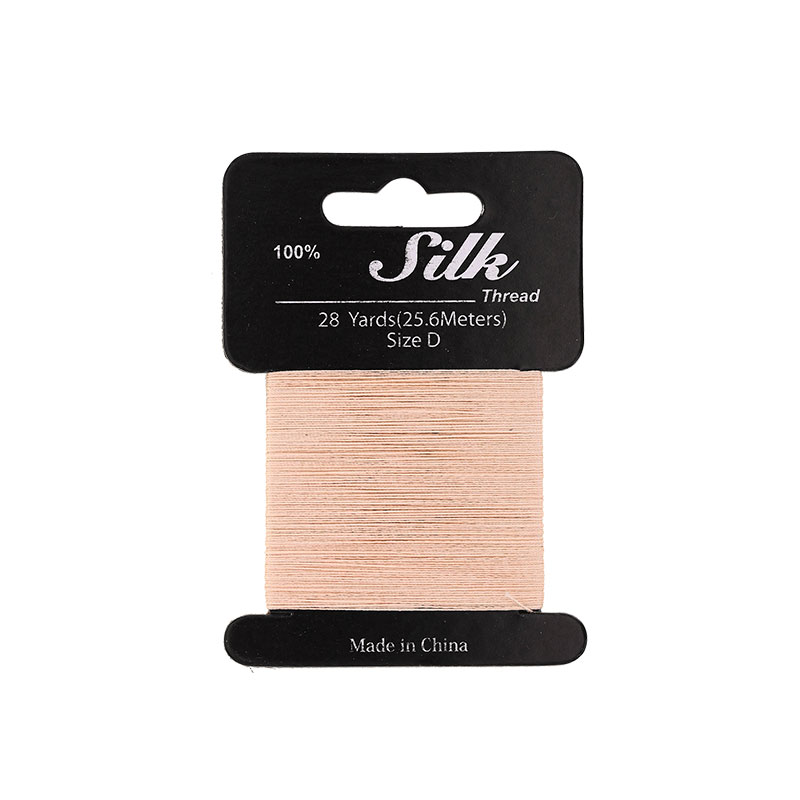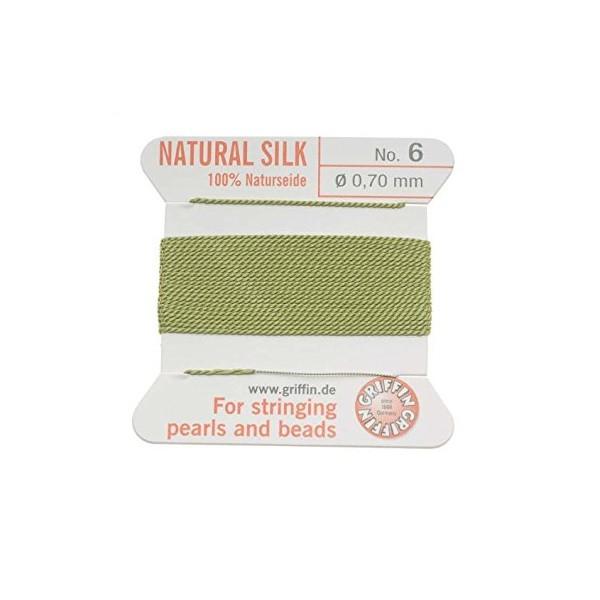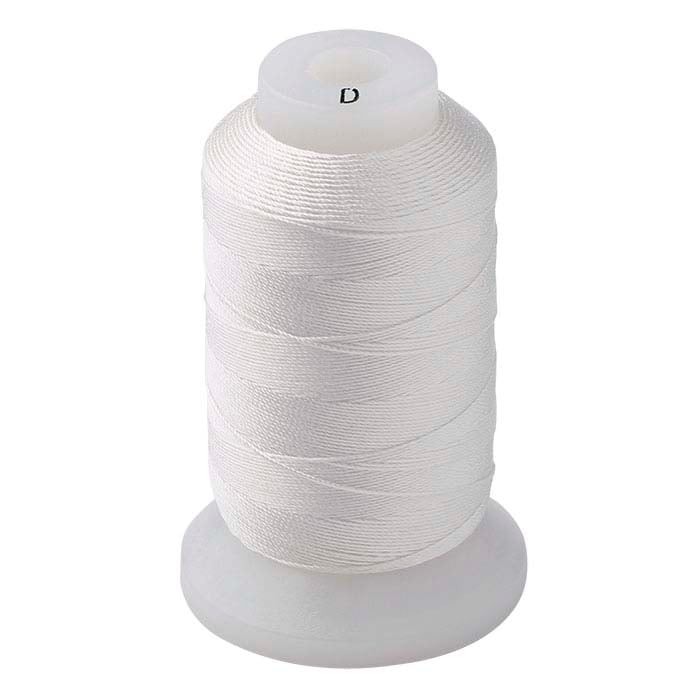Introduction to Silk Beading Thread
Silk beading thread has become a beloved choice for jewelry artists around the world. Known for its strength, flexibility, and luxurious sheen, it’s a must-have for crafting high-quality jewelry pieces. From intricate necklaces to delicate bracelets, silk thread helps to create smooth lines and seamless knots. It also offers a comfortable wear, making it perfect for those sensitive to rougher materials like metal chains.
The Appeal of Griffin 100% Silk Cord
Griffin 100% Silk Cord stands out in the realm of silk beading thread. Each cord boasts high durability, a trait necessary to withstand the tension of knotting and beading. Its sleek texture allows beads to slide on with ease, ensuring an even and consistent look throughout your creation. Moreover, it’s available in a variety of eye-catching colors, enabling you to match the thread to your beads or contrast them for a bold effect. The added convenience of a pre-attached needle saves time and effort, catering to both beginners and seasoned crafters alike. Dive into the Griffin silk experience and you’ll find that your beading projects take on a new level of elegance and refinement.

Choosing the Right Silk Thread Size
Choosing the right silk thread size is crucial for your beading projects. Different beads have different hole sizes, even if they appear similar in size. To ensure a seamless beading experience, you must match your silk beading thread to your beads’ hole sizes.
Impact of Bead Hole Sizes on Silk Thread Selection
When selecting silk beading thread, consider the hole sizes of your beads carefully. Beads with larger holes require thicker threads for a snug fit, while dainty beads with tiny holes need finer threads to pass through without causing damage. Test different thread sizes with your beads to find the perfect match. Silk thread comes in various sizes, such as 2, 4, 6, and 8. These numbers often indicate the thread’s thickness. A size 2 thread fits small holes, while size 8 suits those with larger openings. Your choice will affect the durability and look of your finished piece.
Understanding Thread Lengths and Usage
When engaging in beading projects, one key aspect to consider is the length of silk beading thread you’ll need. The thread length can influence the ease of work and the final outcome of your jewelry piece.
Estimating the Length Needed for Beading Projects
To estimate the necessary thread length for your beading project, factor in the type of beading and the overall design length. A common guideline is to use about three times the final desired length of your piece to account for knotting and spacing between beads. For instance, if you aim to create a 20-inch necklace, you’re likely to need at least 60 inches of silk beading thread. Furthermore, it’s wise to add a few extra inches as a buffer to ensure you don’t run short.
Smaller projects like bracelets might not require as much thread, but it’s important to maintain a similar ratio. Also, if you’re planning to incorporate multiple strands or intricate patterns, increase your estimate accordingly. Factor in the size of the beads as well; larger beads will require less thread in between them, while smaller beads will use more thread due to closer knotting.
Keep in mind the 2-meter standard length provided by brands such as Griffin 100% Silk Cord. This length will approximately knot 34 inches worth of beads but can vary depending on bead size and the knotting technique used. It’s always better to have some extra thread at hand than to fall short during your creative process. By carefully considering your design and the silk beading thread length required, you can ensure a smooth and successful beading experience.

Knotting Techniques with Silk Beading Thread
Silk beading thread is ideal for creating secure knots in jewelry. The luxurious feel of silk paired with its strength makes it a top choice for professionals and hobbyists. When knotting silk beading thread, there are specific techniques you can use to ensure your jewelry maintains its shape and durability over time. Patience and practice will lead to a masterful execution of these techniques, resulting in beautifully crafted jewelry that stands the test of time.
Tutorial and Tools for Knotting Silk Thread
Knotting with silk beading thread may seem daunting at first, but with the right tutorial and tools, it becomes a fairly simple process. A popular method involves using a tool, such as the Beadalon knotting tool, to create consistent and tight knots between each bead. This not only secures the beads in place but also provides a professional finish to the jewelry piece.
For beginners, watching step-by-step tutorials, like those available on YouTube, can be incredibly helpful. These guides demonstrate the process from start to finish, showing you how to handle the silk thread, make knots, and finish off your piece neatly. Experts often advise starting with a longer piece of thread to allow for practice and errors without wasting material.
Having a needle attached to the silk thread, as seen with Griffin 100% Silk Cord, simplifies the process, so look for threads that offer this feature. A needle makes it easier to thread beads and maintains the flow of work without interruption. Remember to choose the appropriate silk thread size based on the bead hole sizes for the best results.
Finishing Techniques for Beaded Jewelry
Creating beautiful silk beaded jewelry doesn’t end with knotting. The finishing techniques you apply can greatly enhance the aesthetic appeal and durability of your pieces. It’s the final steps that can turn a simple string of beads into a professional-looking, heirloom-quality piece. From securing the ends to adding decorative elements, finishing is an essential part of the jewelry-making process.
Using French Wire for Professional Touches
French wire, also known as ‘gimp’ or ‘bullion’, is a finely coiled wire used to cover and protect the silk beading thread where it connects to the clasp. This technique not only adds a professional touch but also prevents the thread from fraying and wearing out due to the movement of the clasp. Here’s how to incorporate French wire into your finishing techniques:
- Cut a small piece of French wire, enough to loop over your clasp.
- Thread it onto your silk beading thread before adding the clasp.
- Pass the thread back through the beads to secure the clasp in place.
- The French wire will create a sleek, metallic sheen, adding to the design’s elegance.
Using French wire is a mark of quality craftsmanship. It signifies attention to detail and care for the longevity of the jewelry. Many professionals consider sizes 6 and 8 most popular, but other sizes like 10, 12, or 14 can also be used depending on the thread and bead hole sizes. Selecting the right size ensures the wire fits snugly, providing optimal protection without overpowering the beads.
Alternatives to Silk Beading Thread
While silk beading thread offers elegance and a smooth touch, it’s not the only option. Budget, project type, and personal preference often guide the choice of thread for beading projects. Let’s explore some alternatives to silk beading thread and their advantages and disadvantages.
Pros and Cons of Waxed Linen, Leather Cord, and Nylon Thread
Waxed Linen: This sturdy material boasts great knot security and an organic look. Its wax coating helps to prevent fraying. However, its stiffer nature may not be suitable for all designs and can be less comfortable against the skin than silk.
Leather Cord: A leather cord offers a bold, rustic appeal ideal for larger, statement pieces. Its durability is high, but leather cannot offer the delicate, refined look that silk does. Leather may also vary in thickness and stretch over time.
Nylon Thread: Affordable and strong, nylon thread is a common choice. It comes in various colors, much like silk. Nylon threads are more abrasion-resistant but can have a synthetic feel and lack the natural luxury of silk.
Each material brings its own set of characteristics to a beading project. When deciding between them, consider the style, durability needs, and how the texture of the thread complements your beads. Silk beading thread remains a superior choice for fine jewelry but exploring alternatives can broaden your creative horizons and meet different project requirements.

Popular Sizes and Neutral Colors
Silk beading thread comes in various sizes and colors to fit different jewelry designs. Neutral-colored threads like white, beige, or gray are versatile. They team well with a range of bead colors. Bold thread colors can add contrast or complement your beads. Popular sizes for silk beading thread are 6, 8, 10, 12, or 14. Neutral colors in these sizes offer flexibility for various projects.
When to Choose Sizes 6, 8, 10, 12, or 14
Selecting the correct silk beading thread size is key to a project’s success. Here’s a quick guide to help:
- Size 6: Ideal for beads with medium holes. Provides strength and allows for smooth knotting.
- Size 8: Great for larger hole beads, offering a snug fit and substantial feel.
- Size 10: Opt for this size when beads have larger openings yet require a fine appearance.
- Size 12 and 14: Best for very large beads or for making a bold statement with chunkier jewelry designs.
Size and color selection in silk beading thread impacts both the functionality and aesthetic of your pieces. Match the thread size to your bead hole size for ideal outcomes. Neutral colors offer subtlety, while bolder shades create visual interest. It’s essential to maintain a harmony between the beads, silk thread size, and color for a professional and elegant finish.
Maintenance and Care for Silk Beaded Jewelry
Caring for silk beaded jewelry properly ensures its longevity and beauty. Silk, while durable, requires gentle handling to maintain its luxurious look.
Tips for Preserving the Quality of Silk Jewelry
To keep your silk beaded jewelry in its best condition, follow these simple tips:
- Store Carefully: Wrap your jewelry in a soft cloth or store it in a silk pouch. This prevents tangles and protects from dust.
- Avoid Water: Don’t wear your silk jewelry in water. Silk can weaken when wet, leading to wear and breakage.
- Keep Away from Chemicals: Perfumes, hairsprays, and lotions can harm silk. Apply these before wearing your jewelry.
- Gentle Cleaning: Clean with a dry or slightly damp cloth. Never wring or twist the silk thread.
- Regular Inspections: Check for fraying or loose knots. Address any issues early to avoid losing beads.
- Limit Sun Exposure: Prolonged sunlight can fade silk. Store jewelry out of direct light when not wearing.
By following these tips, you can enjoy your silk beaded jewelry for years to come. Treat your silk threads like delicate fabric, and they will retain their strength and sheen. Make the effort to care for your jewelry, and it will remain a cherished piece in your collection.
